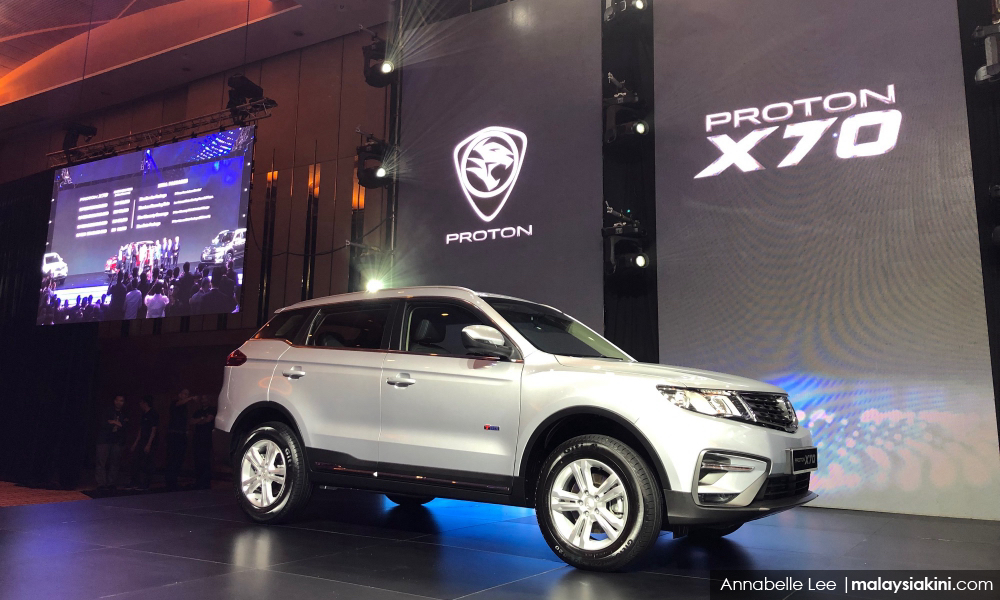
QUESTION TIME | For now, prices of locally assembled cars are not going to rise as much as 20 percent, or up to RM33,000, but this is only until the end of this year after which the new system of computing the value of cars for the purpose of excise duty kicks in.
There was initial confusion over whether the new method of computation would be imposed with consequential rises in the prices, especially of locally-assembled cars because of higher excise duties.
In effect, this would have increased the gap in prices between locally assembled cars and the so-called national cars even further, increasing the competitive pricing of these cars and making more car buyers buy national brands such as Proton and Perodua.
This is the last thing one wants when it comes to car prices which in Malaysia are among the highest in the world and are a considerable burden on all sectors of the public in Malaysia as everyone aspires to buy cars to transport their families safely and comfortably in the absence of a viable and affordable public transport system.
Buying a car is the largest investment that families make aside from the purchase of a house and considerably drains the meagre resources of the public at large all for the sake of protecting and cultivating a highly inefficient industry which has neither the scale nor the local expertise to make cars competitively.
In other words, if the prices of locally assembled cars increase, it would mean even more protection through tariff barriers for the national cars which have already been protected to the tune of over RM300 billion since the first Proton rolled off the plant in 1985 as I explained in this article.
I used estimated sales of some 12 million vehicles between 1985 and 2016 of which some four million vehicles sold were Protons. I have estimated, conservatively, that the average price per vehicle was RM30,000 higher because of protective barriers. Multiply this by 12 million vehicles for RM360 billion.

You may disagree with the exact figure but there can be little doubt that the order of magnitude is in the hundreds of billions of ringgit.
This new system of calculating the value of a locally assembled car for excise duty purposes broadens the category of things that have to be included in the price of cars effectively raising the so-called open market value of the car (OPV).
According to this website, the new method widens the net considerably by including “any direct and indirect costs incurred or accounted in the manufacture and sale of the dutiable goods.” This is “frightening,” because the Finance Ministry/Royal Customs and Excise Department did not engage the auto industry prior to the release of the gazette widening the method of calculating the OPV, the website said.
As Malaysians girded themselves in preparation for higher car prices, a clarification came via a statement from industry group, the Malaysian Automotive Association or MAA, that the Finance Ministry has confirmed there will be no increase in prices until Dec 31, 2020.
This will not be the end of the matter, of course. What happens as we approach 2021? Will there be a mad rush to buy locally assembled cars such as Toyotas and Hondas whose prices are bound to go up by as much as 20 percent according to MAA estimates?
This move may not even raise much more revenue for the government because many locals will buy the nationals cars - the Peroduas and the Myvis which will become relatively cheaper. The only reason these manufacturers make money is because of tariff protection and clearly dubious practices.
Take Proton for example. It is turning into profit solely because of one new model - the Proton X70 - a model based entirely on the Geely Boyue. Up to now, this car is not even locally assembled, let alone manufactured, being fully imported from China.
The much-hailed Proton recovery is a farce, the fact is until today not a single X70 has been built in Malaysia. It was supposed to have been by last year but now it is supposed to be this year. Meantime, Proton makes millions by simply importing China cars and selling it with tax advantages in Malaysia.

Back to this farcical announcement of excise duty changes. Finance Minister Lim Guan Eng first says that the new duty structure has not been fixed yet. And then the MAA, not the Finance Ministry, announces the Finance Ministry’s clarification holding off for one year the new method of calculation of the OPV which would raise prices by as much as 20 percent.
Even this is unsatisfactory. Will prices go up next year? Will there be excessive demand for cars as the deadline comes up? How much will that distort the market place? Remember the artificial demand created in the second half of 2018 when the government foolishly gave an exemption from both the goods and services tax (GST) and the sales and services tax (SST)?
Instead of rationalising the car industry so that all duties are progressively reduced as the local car industry plugs into foreign car manufacturers and improves efficiencies - Perodua with Daihatsu and Proton with Geely - the government is finding ways of increasing duties through dubious means.
This will continue to give an unfair advantage to national car manufacturers such as Perodua and Proton which will lead to higher and higher car prices, promote an inefficient industry and result in customers paying hundreds of billions of ringgit extra in the future for cars, money which could have been used for more productive purposes.
P GUNASEGARAM says protecting industries always leads to higher prices and poorer quality. - Mkini
I prefer Proton X70 for local cars
ReplyDelete